Archive for November, 2020
2020 Help Enact Resolution commemorating the 80th Anniversary of the Katyn Massacre
Your help is needed to enact the resolution commemorating:
the 80th Anniversary of Katyń Forest Massacre
To get involved, please contact the Washington, DC office of your State’s
Members of the House of Representatives and/or Senators to co-sponsor
House Resolution 986 (H.Res.986) and Senate resolution 566 (S.Res.566).
This resolution commemorates the Polish soldiers and civilians who were
murdered by the NKVD at the Katyń Forest Massacre, and it condemns the
Kremlin’s continuing efforts to spread disinformation about this mass murder.
By calling the Washington, DC offices of our Congresswomen and Congressmen we as Polish Americans show our civic engagement. The Washington, DC offices of our Members of the House of Representatives record the number of phone calls received from their constituents on pending legislation. We must make our Polish American voices heard on Capitol Hill. The more members of the Polish American community who participate, the more likely it is that we will make an impact.
You can find your Wisconsin Representatives’ contact information by searching HERE.
Below is a suggested phone script:
My name is ___________ and I am a constituent residing in zip code ________. I am calling to ask Representative _______________ to support House Resolution 986, a resolution commemorating the 80th Anniversary of the Katyń Forest Massacre. This resolution honors the Polish soldiers and civilians who were shot on Stalin’s orders by the Soviet People’s Commissariat for Internal Affairs, also known as the NKVD, in Katyń Forest and several other killing grounds in the western Soviet Union, in April 1940 when Stalin was Hitler’s ally. This bi-partisan resolution condemns Russia’s continuing efforts to spread disinformation about the Katyń Massacre and World War II. Passing this resolution will strengthen our alliance with Poland, one of our oldest and most reliable allies, as well as serve as a gesture of solidarity with Polish Americans, many of whose loved ones were murdered on Stalin’s orders.
House Resolution 986 H.Res.986 (a PDF copy can be downloaded here) is sponsored by Representative Daniel Lipinski (D-IL-3), and co-sponsored by Jackie Walorski (R-IN-2), Marcy Kaptur (D-OH-9), Christopher Smith (R-NJ-4), Paul Tonko (D-NY-20), Raja Krishnamoorthi (D-IL-8).
House Resolution 986 S.Res.566 (its text is identical to H.Res.986) is sponsored by Senator Robert Menendez (D-NJ).
2020 Independence And Veterans Day
On the day when American Polonia traditionally celebrates the Independence and Veterans Day, we review all the reasons that make November 11 so memorable (see Prof. Pienkos’ story below) and unveil the newly revised booklet DO YOU KNOW POLAND.
In addition to many content updates, the booklet features now a new cover page with iconic images telling the incredible story of Poland and its people.
Can you identify all of them?
Last minute reminder for movie fans: The 32nd edition of the POLISH FILM FESTIVAL In Chicago has started on November 7th and continues through November 22nd. Unable to travel to Chicago? The streaming passes are still available at the festival website:
►festival schedule◄ ►the list of movies◄
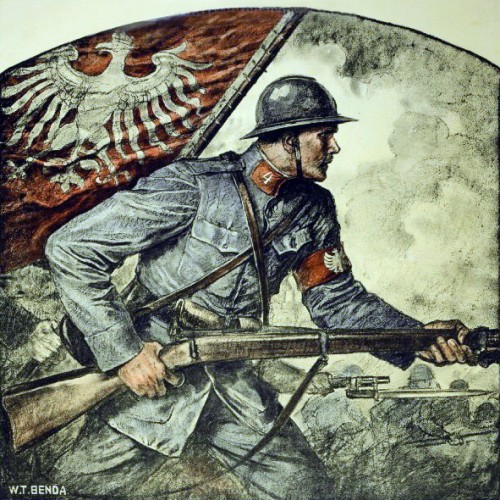 American recruitment poster for the Polish Army in France by W.T. Benda
American recruitment poster for the Polish Army in France by W.T. Benda(public domain, Wikimedia Commons)
WHY WE REMEMBER NOVEMBER 11
Wednesday November 11 marks two great anniversaries and two national days of remembrance. What is more, they are very closely connected to one another.
On November 11, 1918 World War I ended with an ‘armistice’ or cease fire between the armies of Germany, France, Britain, and the United States on the ‘western front’ – that blood-soaked border between France and Germany. This cease fire ended a tragic four years War in which millions of soldiers had died.
In the years after, people everywhere began to honor those who had sacrificed so much in the War. In America, November 11 was recognized as Armistice Day. Today, it is Veterans Day, when we honor those men and women in uniform who have served our country in all our wars. It is indeed a hallowed day.
Now on that very same day, November 11, 1918, Jozef Pilsudski was in Warsaw to proclaim Poland’s independence – after 123 years in which the Polish people had endured the oppressive rule of three alien empires – Russia, Germany and Austria. Today November 11 is Poland’s national day, Poland’s ‘Fourth of July’.
For Poland’s people, World War I had its own special significance. In 1918 the Russian, German, and Austrian empires all collapsed, giving them ‘the chance of a lifetime’ to regain their independence. That independence had been lost between 1772 and 1795, when those same empires had combined to divide up the country in a series of three land-grabs known in the history books as the ‘partitions of Poland.’ From 1795 on, six generations of Poles knew only foreign rule and oppression.
But the memory of independence survived. Indeed, in the 19th century, Poles heroically rebelled to regain their independent statehood, most notably in 1830 and 1863. But their efforts failed. Poland’s oppressors were simply too powerful to be driven out in an insurrection. Indeed it was the reality of oppression that led so many Poles – over five million – to emigrate from their homeland, to settle in France, Belgium, Canada, Brazil and most by far in the United States. Everywhere they created organizations dedicated to helping Poland regain its freedom. In America these organizations included the Polish National Alliance, the Polish Falcons, and the Polish Women’s Alliance.
In partitioned Poland, the dream of independence lived on as well. Among the countless patriots devoted to the cause were the self-trained military strategist Jozef Pilsudski (1867-1935), the renowned virtuoso pianist Ignacy Jan Paderewski (1860-1941), and the political thinker Roman Dmowski (1864-1939).
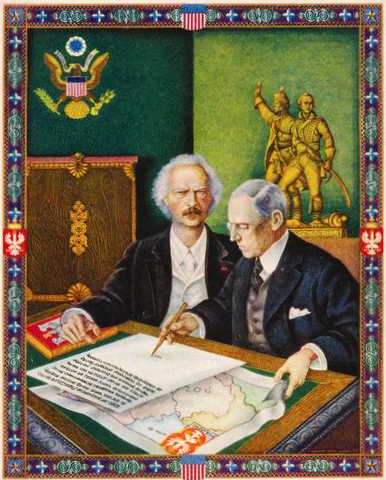 Ignacy Jan Paderewski and Woodrow Wilson: Painting by Artur Szyk (credit: National Museum in Warsaw, Poland, via Europana)
Ignacy Jan Paderewski and Woodrow Wilson: Painting by Artur Szyk (credit: National Museum in Warsaw, Poland, via Europana)When World War I broke out they and their comrades seized the moment to win Poland its freedom. Inside Poland, a killing ground for the armies of Poland’s three occupiers – at war with each other, Pilsudski led legions loyal to him and the cause. Dmowski was in Paris as head of a national committee that aimed at winning recognition from France and Britain for a postwar Polish state. In the U.S., Paderewski put his musical fame to work in winning support for Poland from influential Americans, the massive Polish immigrant community, and even the President of the United States, Woodrow Wilson.
At War’s end Pilsudski made his declaration of independence. Paderewski soon joined him and became Poland’s first Prime Minister. In 1919 he and Dmowski represented Poland’s cause at the Paris Peace Conference. Pilsudski became head of newly formed Polish armies and took on the tough task of regaining Poland’s lands by force of arms. Indeed, it was only in March 1921 when Poland’s borders were secured, after 300,000 fighting men were lost in battle.
The Poland that emerged after World War I became the Poland of the Second Republic. It was a Poland deluged with problems and no allies to assist in its reconstruction. But that new Poland succeeded in deepening its citizens’ renewed commitment to independence. And despite the tragedy of World War II and 45 years of Soviet domination that followed, another Poland, the Poland of the Third Republic, was reborn to freedom in 1989, backed by the United States, Pope John Paul II, and people of Polish origin in the emigration.
The leaders of the new Third Republic acted quickly to make November 11 Poland’s national day. 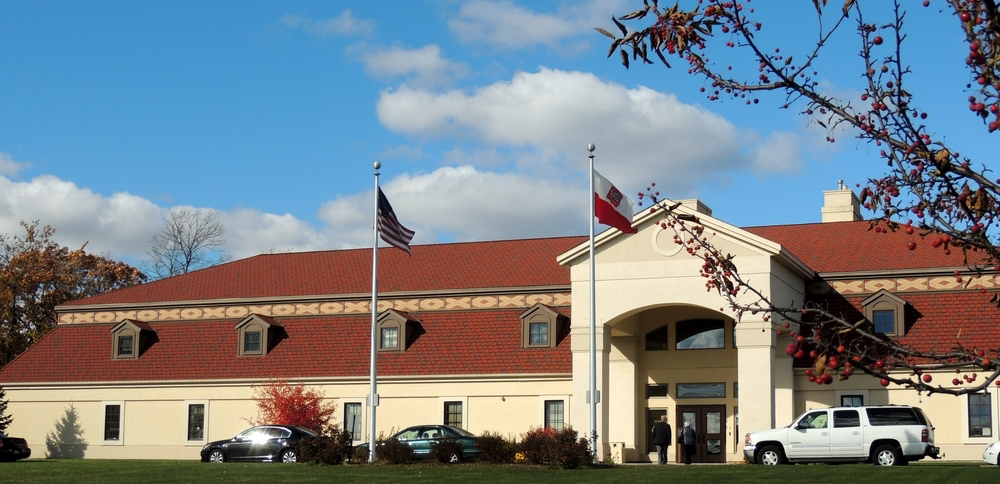
In November 2000, the Wisconsin Division of the Polish American Congress was proud to hold its annual Polish Independence Day/Veterans Day Banquet at the newly opened Polish Center of Wisconsin. Over 240 guests were at that great event, including the Consul General of free Poland from Chicago. This was the start of a beautiful tradition at the Polish Center that will be renewed once our country emerges from the pandemic.
Emeritus Donald Pienkos
Professor Emeritus and Member, Polish Heritage
Past President, Wisconsin Polish American Congress
2020 Remembering Paderewski
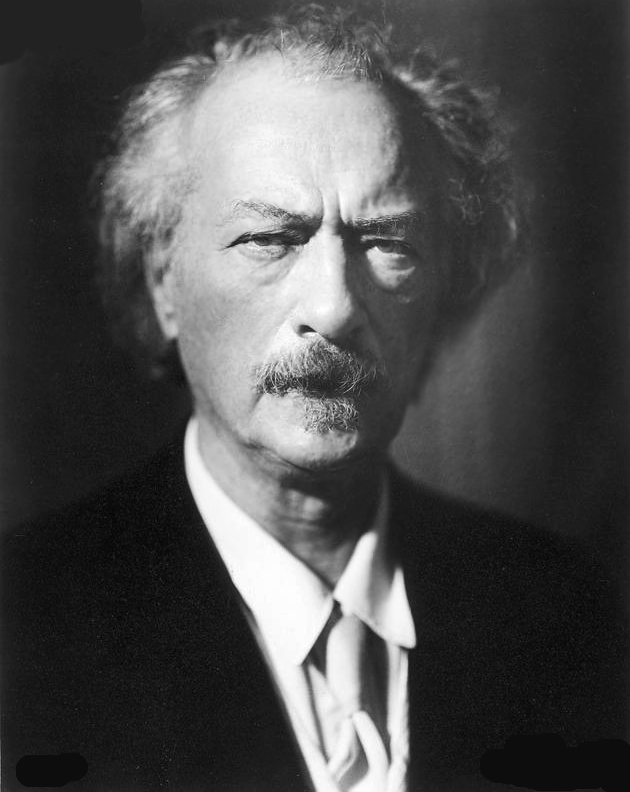 Ignacy Jan Paderewski ca.1936
Ignacy Jan Paderewski ca.1936(public domain, Wikimedia Commons)
The Extraordinary Ignacy Jan Paderewski is Born – 160 Years Ago
Ignacy Jan Paderewski was born on November 6, 1860 in the village of Kurylowka in Russian-ruled Podolia. A recognized child prodigy at the piano at age three, in 1872 he was sent by his father, a participant in the 1863 Polish insurrection against Russia, to study at the Warsaw Conservatory. While he did not impress his instructors due to his lack of serious formal training (one suggested he might switch to the saxophone!), he persisted in pursuing serious training under the tutelage of several outstanding teachers.
In 1888 Paderewski made his debut in Paris. His was a smashing success. Tall, lithe and charismatic – his head topped off with a lion-like mane of golden-red hair – Paderewski thrilled his audience and those that came after in England. In 1890 he made the first of his thirty tours of the United States. It was here that he won lasting acclaim as a true musical super star, earning millions of dollars along the way. In America he performed everywhere on the Steinway piano he made famous. In Springfield, Missouri a future U.S. president, Harry Truman had the unforgettable experience of meeting him at age 12. In West Allis, Wisconsin Liberace’s mom invited him to dinner where he praised her young son’s talent. In 1913 he purchased property in the California town of Paso Robles near Santa Barbara. There he pioneered the creation of its renowned wine industry.
Paderewski’s tours took him all over the world – even to Australia. But he was not content with performing. He tried his hand at becoming a serious composer and even wrote an opera. However while his compositions are no longer much performed, he did create one piece that is known everywhere – his Minuet in G.
Outside Paso Robles, Paderewski also purchased mansions near Tarnow in Poland and in Switzerland. Tragically, his first wife died in childbirth and left a son who suffered serious birth defects and passed away at age 20. His devoted second wife, Helena, was past childbearing years.
 Ignacy Jan Paderewski and Woodrow Wilson: Painting by Artur Szyk (credit: National Museum in Warsaw, Poland, via Europana)
Ignacy Jan Paderewski and Woodrow Wilson: Painting by Artur Szyk (credit: National Museum in Warsaw, Poland, via Europana)From the 1890s Paderewski began giving away his money to various causes, starting with scholarships for young music students. He championed the paintings of Jan Styka, creator of the enormous panoramic victory of Kosciuszko at Raclawice (now displayed in Wroclaw, Poland), as well as that of Christ’s crucifixion – at Forest Lawn Cemetery in Los Angeles. In 1910 he funded a great monument in Krakow, then in the section of Poland under Austro-Hungarian imperial rule. The monument recalled the 500th Anniversary of the victory of King Wladyslaw Jagiello’s forces over the Teutonic Knights at Grunwald. At the dedication, Paderewski spoke with great eloquence to an audience of some 50,000. The event reaffirmed the Poles’ desire for independence, lost since 1795. How could anyone foresee that independence would indeed be achieved and just eight years later? And that Paderewski would play a key role in its realization!
In August 1914 World War I broke out. Paderewski, appointed to represent the Polish national committee formed in France, was soon in the United States as its spokesman for Poland. Here he used his fame to reach out to Americans and to America’s large Polish community, preaching the cause of independence and humanitarian aid for his homeland’s inhabitants. Indeed the War had already turned partitioned Poland into a vast killing ground in the conflict between the armies of Germany and Austria-Hungary fighting against imperial Russia.
Paderewski reached out to the public by playing shortened concerts everywhere in the U.S. and following them up with his eloquent, non-partisan appeals for Poland. Fluent in English and possessing a showman’s flare for the dramatic, he even won audiences with the President of the United States, Woodrow Wilson, and made him a convert for the Polish cause. Indeed on at least three separate occasions Wilson would go on to address the American public on behalf of the Poland’s people – in 1915 in supporting humanitarian relief for its inhabitants and in 1917 and 1918 in backing the restoration of an independent Polish state.
Working closely with the organizations of the American Polish community, Paderewski called for the creation of a Polish army in America on behalf of Polish independence at the convention in Pittsburgh of the Polish Falcons Alliance in April 1917. Amazingly, The U.S. government would approve his appeal for what he called a “Kosciuszko Army”. Over 38,000 Polish Americans would volunteer and nearly 21,000 men would serve in it as part of a 100,000 man force seeing action in France and later in Poland. In August 1918, his appeal to the delegates at the great congress of the Polish emigration in Detroit resulted in a resolution calling for a $200 million fund drive for Poland.
Following the War’s end on November 11, 1918, Paderewski traveled to Europe. There he played a critical role in regaining lands for the new Polish state that had been ruled by the German empire. In January 1919 he accepted appointment to the office of Prime Minister of Poland and also took over the responsibilities of Minister for Foreign Affairs. In these capacities he represented Poland at the postwar Paris peace conference. After resigning in December 1919 Paderewski left Poland and returned only a few times over the next few years until 1924. A critic of Jozef Pilsudski and an opponent of his 1926 coup, Paderewski turned his attentions back to concertizing. However, in 1936 he joined with democratic Poles like General Wladyslaw Sikorski and Peasant Party leader Wincenty Witos in organizing a national coalition aimed at returning Poland to true democracy.
With the outbreak of World War II in 1939, Paderewski, now 80 years old, made his way out of Switzerland to London. There he was appointed to serve as Chair-man of the Polish Exile Government’s National Council. On June 29, 1941, he died in the United States while on a mission here on behalf of the London government.
A universally admired figure, Paderewski was buried at the Arlington National Cemetery, a unique honor. However his wish was for his remains to be reinterred in Poland once his homeland regained its freedom. In 1991 this wish was fulfilled when his casket was reinterred in the Cathedral of St John in Warsaw.
Paderewski’s heart is in the United States, in the wall of the great Basilica of the American Czestochowa in Doylestown, Pennsylvania. His is so like the fate of the immortal pianist/composer Frydryk Chopin, whose remains are in Paris’ Pere Lachaise Cemetery and whose heart is in The Church of the Holy Cross in Warsaw.
More than anyone until the time of Pope John Paul II and Lech Walesa, it was Paderewski who was the great apostle of a free Poland to America and the world. .
Prof. Emeritus Donald Pienkos
Source: Adam Zamoyski: Paderewski (1982).
Archived Posts
- 2023 Merry Christmas
- 2023 Lighting the Light of Freedom on Dec 13 at 7:30pm
- Independence Day and Veteran Day invitation
- 2023 Wianki Festival
- 2023 May 3rd Constitution Day Celebration
- 2023 Lecture on Polish Borders by Prof. Don Pienkos
- 2023 REMEMBER THIS: Jan Karski movie premieres on PBS Wisconsin
- 2023 Upcoming lectures in the Polish Center of Wisconsin
- 2022 Polish National Independence Day
- 2022 Independence and Veteran Day Luncheon (invitation)
- 2022 Wianki, Polish Celebration of Noc Świętojańska (St. John’s Night)
- Celebrating Constitution of May 3, 1791 in Polish Center of Wisconsin
- 2022 Polish Constitution Day, Polish Flag Day and the Day of Polonia
- 2022 March Bulletin
- 2022 Polonia For Ukraine Donations
- 2022 Polish American Congress Condemns Russian Invasion of Ukraine
- 2022 PAC-WI State Division Letters to WI Senators and Representatives
- 2021 Polish Christmas Carols
- 2021 Panel Discussion: Martial Law in Poland 1981-1983 (REPORT)
- 2021 Panel Discussion: Martial Law. Poland 1981-1983 (invitation)
- 2021 Solidarity: Underground Publishing and Martial Law 1981-1983
- 2021 Polish Independence Day and Veterans Day
- 2021 Polish Independence Day and Veterans Day Luncheon
- 2021 Prof. Pienkos lecture: Polish Vote in US Presidential Elections
- 2021 POLISH HERITAGE MONTH EVENTS
- 2021 “Freedom” Monument Unveiled in Stevens Point, Wisconsin
- 2021 PCW Picnic and Fair
- 2021 Remembering Września Children Strikes (1901-1903)
- 2021 May 3 Constitution Day
- 2021 DYKP Contest Winners and Answers
- 2021 DYKP CONTEST EXTENDED and CASIMIR PULASKI DAY
- 2021 February announcements
- 2021 Polish Ministry of Education and Science oficials visit Wisconsin
- 2021 DYKP Contest, KF Gallery and Dr. Pease lectures
- 2020 Help Enact Resolution commemorating the 80th Anniversary of the Katyn Massacre
- 2020 Independence And Veterans Day
- 2020 Remembering Paderewski
- 2020 POLISH HERITAGE MONTH
- 2020 Solidarity born 40 years ago
- 2020 Battle of Warsaw Centenary
- 2020 The Warsaw Rising Remembrance
- 2020 June/July News: Polish Elections, Polish Films Online and more
- 2020 Poland: Virtual Tours
- Centennial of John Paul II’s Birth
- 2020 Celebrating Polish Flag, Polonia and Constitution of May 3rd
- 2020 Polish Easter Traditions
- 2020 Census and Annual Election
- Flavor of Poland (Update 3)
- 2020 Copernicus, Banach & Enigma talk
- 2020 Do You Know Poland and other announcements
- 2020 Flavor of Poland (Update 2)
- 2020 People and Events of the Year
- 2019 Holidays
- 2019 December Medley
- 2019 Independence Celebration
- 2019 Independence Invitation
- 2019 WI Study in Poland Reports
- Lecture: Poland’s Entry Into the NATO
- August 2019 anniversaries
- 2019 Polish Fest
- Celebrating Polish Constitution and Ignacy Paderewski
- WSIP 2018 Reports (Wisconsin Study in Poland)
- 2018 Christmas Carols
- 2018 Polish Independence and Veterans Day
- November 2018 events
- October 2018 Events
- 2018 Kashube Lecture Notes
- September 2018 events
- 2018 Polish Fest Report
- Upcoming 2018 Polish Fest
- Celebrating Polish Constitution Day
- Poland 1979-1989 (panel discussion)
- Protest the Passage of S.447 in the U.S. House of Representatives



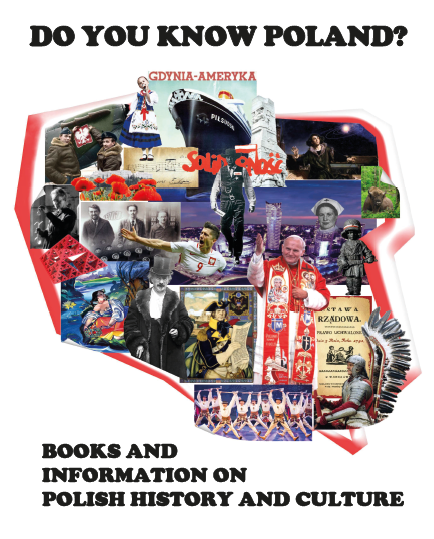
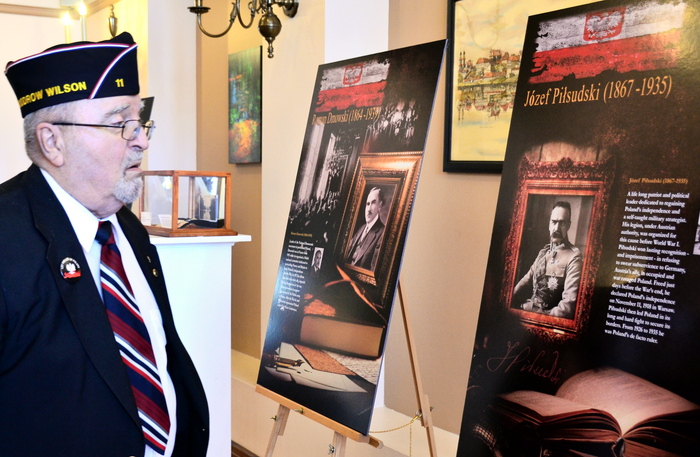 Click on the image above to revisit the 2018 exhibit presenting the main figures of the Polish fight for independence. (Photos Irena Frączek)
Click on the image above to revisit the 2018 exhibit presenting the main figures of the Polish fight for independence. (Photos Irena Frączek)